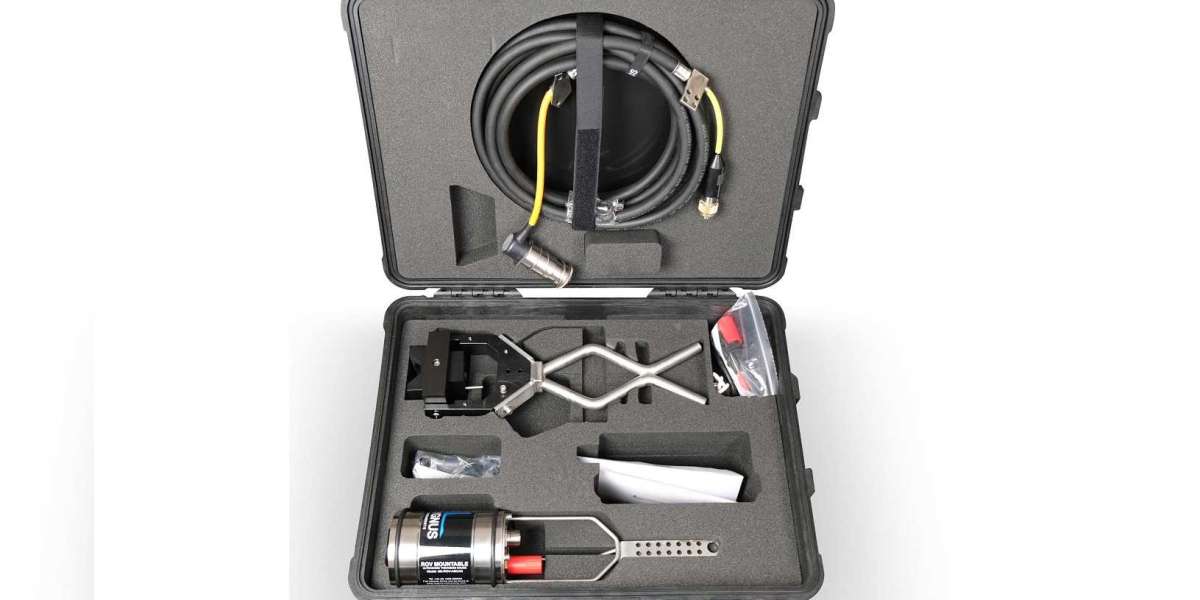Ultrasonic Thickness Testing (UTT) has become an essential tool for industries that rely on precise material measurements to ensure quality, safety, and efficiency. This non-destructive testing (NDT) method uses high-frequency sound waves to measure material thickness and detect flaws, all without compromising the material's integrity. If you're looking to adopt advanced techniques for material testing, explore more about UTM ultrasonic thickness measurement.
What is Ultrasonic Thickness Testing?
UTT is a highly efficient method for measuring material thickness by analyzing sound waves. A transducer emits ultrasonic waves, which travel through the material and reflect back. The time taken for the echo to return helps determine the thickness of the material.
Why is UTT Widely Used?
- Its precise and reliable.
- It doesnt damage the material.
- Its versatile for different applications.
How Does Ultrasonic Thickness Testing Work?
Step 1: Preparing the Material
Clean the surface to remove rust, paint, or debris that could interfere with the sound waves.
Step 2: Applying the Couplant
A couplant gel is used to eliminate air gaps between the transducer and the material, ensuring smooth wave transmission.
Step 3: Conducting the Test
The transducer sends sound waves into the material, and the device calculates the thickness based on echo timings.
Step 4: Analyzing the Results
Data is displayed in real time, allowing operators to make immediate decisions.
Top Benefits of Ultrasonic Thickness Testing
1. Non-Destructive Testing
UTT ensures material integrity remains intact, making it perfect for testing expensive or critical components.
2. High Accuracy
The method delivers precise measurements, even for thin materials or intricate structures.
3. Cost Efficiency
UTT minimizes downtime, reduces repair costs, and extends equipment life by identifying issues early.
4. Versatile Applications
From metal and plastic to composites, UTT works across a range of materials and industries.
5. Real-Time Results
Data is instantly displayed, enabling quick decision-making and efficient project management.
6. Portability
Modern UTT devices are compact and portable, allowing for on-site testing in challenging environments.
Applications of Ultrasonic Thickness Testing
1. Oil and Gas Industry
Regularly monitors pipeline walls to detect corrosion and prevent leaks or failures.
2. Marine and Shipbuilding
Ensures the structural integrity of ship hulls and offshore structures, enhancing safety and compliance.
3. Manufacturing
Checks material specifications during production to ensure quality and uniformity.
4. Power Plants
Inspects boilers and turbines to prevent costly downtimes and maintain operational safety.
5. Aerospace
Detects flaws in aircraft components, ensuring they meet stringent safety standards.
How UTT Enhances Safety
Prevents Accidents
By detecting thinning, cracks, or flaws in materials, UTT helps avoid structural failures.
Ensures Compliance
Industries can meet strict safety and quality standards by incorporating UTT into their maintenance routines.
Minimizes Risks
Early detection allows for timely repairs, reducing risks for workers and the environment.
How UTT Saves Costs
Reduces Maintenance Costs
UTT identifies wear and tear before it leads to expensive repairs or replacements.
Increases Equipment Lifespan
By detecting and addressing issues early, UTT extends the life of machinery and components.
Improves Efficiency
Quick and reliable testing minimizes downtime, ensuring smooth operations.
Limitations of Ultrasonic Thickness Testing
While UTT offers numerous advantages, it has some limitations:
- Surface preparation is necessary for accurate results.
- Testing uneven materials may require additional calibration.
- Operators need specialized training to interpret results correctly.
How to Get the Most Out of UTT
Invest in Quality Equipment
Choose devices that suit your material and operational requirements.
Train Your Team
Ensure operators understand how to use the equipment and interpret the data accurately.
Schedule Regular Testing
Create a maintenance schedule to monitor material health and prevent unexpected failures.
Advancements in Ultrasonic Thickness Testing
Automated UTT Systems
Robotics and drones equipped with UTT tools can access hard-to-reach areas, improving efficiency.
Digital Integration
Data from UTT devices can now be integrated into software for better analysis and reporting.
Enhanced Accuracy
Modern devices offer greater precision, even for challenging materials or environments.
When Should You Use Ultrasonic Thickness Testing?
Routine Inspections
Schedule periodic tests to monitor material condition over time.
Post-Repair Verification
Ensure repairs meet required standards before resuming operations.
Pre-Installation Checks
Confirm material specifications before integrating components into critical systems.
Choosing the Right UTT Provider
Experience and Expertise
Select a provider with a proven track record in ultrasonic testing.
Advanced Equipment
Ensure the provider uses state-of-the-art UTT tools for accurate results.
Comprehensive Services
Look for providers that offer inspection, reporting, and consultation services.
Conclusion
Ultrasonic Thickness Testing is an indispensable tool for industries that prioritize safety, quality, and efficiency. Its non-destructive nature, combined with its high accuracy and versatility, makes it a go-to solution for monitoring material health. Whether youre in oil and gas, manufacturing, or aerospace, investing in UTT ensures your operations run smoothly and your assets last longer.
 Meet Ups
Meet Ups
 Experiences
Experiences
 Learning Center
Learning Center
 Accommodation
Accommodation
 Roomie
Roomie
 Ride
Ride
 Spread the Word
Spread the Word
 Student Bazaar
Student Bazaar
 Jobs
Jobs
 Blogs
Blogs
 About StudentInsta
About StudentInsta

